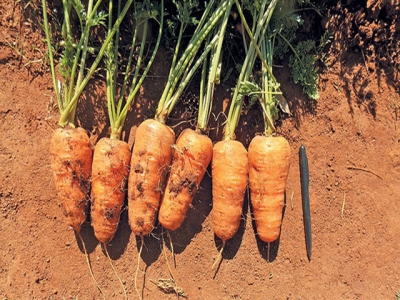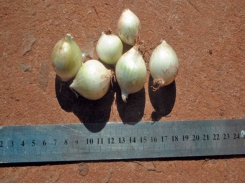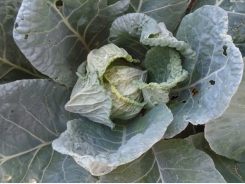A guide to growing baby carrots

There’s always a market for baby vegetables, and carrots are no exception. In the past, top-shaped baby carrots were the most popular in the frozen range.
When treated correctly, this type of Chantenay carrot makes wonderful baby carrots. Photo: Bill Kerr
Frozen food producers would harvest the carrots, trim the leaves, remove the skin with a steam peeler and then freeze the vegetables.
The variety commonly used was Chantenay Red Core, which is slightly shorter than the regular Chantenay.
This variety is also used for the production of normal-sized carrots, so producing mature baby carrots of about 5cm in length requires special procedure.
Fertilisation
The first step to producing these carrots is to ensure correct fertilisation. Too much nitrogen will stimulate leaf growth, causing the more advanced plants to overshadow the weaker ones. The advanced plants will then form normal-sized roots, while completely suppressing the adjacent carrots, rendering them useless.
Planting and spacing
The next step is to select the correct location for planting. You need 10 to 12 times more seeds per hectare in order to produce a plant density where competition for light restricts growth. Depending on the seed size, use 10kg to 12kg of seed per hectare.
Although some farmers choose to broadcast the seed and work it lightly into the soil with a spike-toothed harrow, the best method is to use a regular carrot planter, preferably one that plants three rows per planter bin.
This planter is slightly off-set to one side. When it reaches the end of the row, return on the same tracks so that the planter plants between the rows already planted. The more even the spacing, the better.
Spacing is important; you need a population in which every plant produces a marketable root. Too high a population will result in unusable plants, often at the expense of the plants alongside them.
Irrigation
Step three is to ensure correct irrigation. While normal-sized carrots need to be progressively stressed, and heavier irrigation applied in stages, baby carrots need frequent, light irrigation, as root growth must be restricted.
OTHER VARIETIES
You could also plant baby carrot varieties, which produce cylindrical carrots that are about 10cm to 12cm long. These are known as Amsterdam Forcing types. They’re usually early maturing, sweet and juicy, and very attractive.
Related news
Tools

Phối trộn thức ăn chăn nuôi

Pha dung dịch thủy canh

Định mức cho tôm ăn

Phối trộn phân bón NPK

Xác định tỷ lệ tôm sống

Chuyển đổi đơn vị phân bón

Xác định công suất sục khí

Chuyển đổi đơn vị tôm

Tính diện tích nhà kính

Tính thể tích ao




 Tomatoes year-round – new cultivars
Tomatoes year-round – new cultivars  Practicing IPM with cabbages
Practicing IPM with cabbages